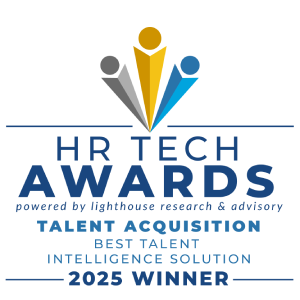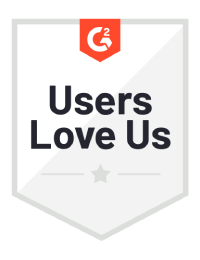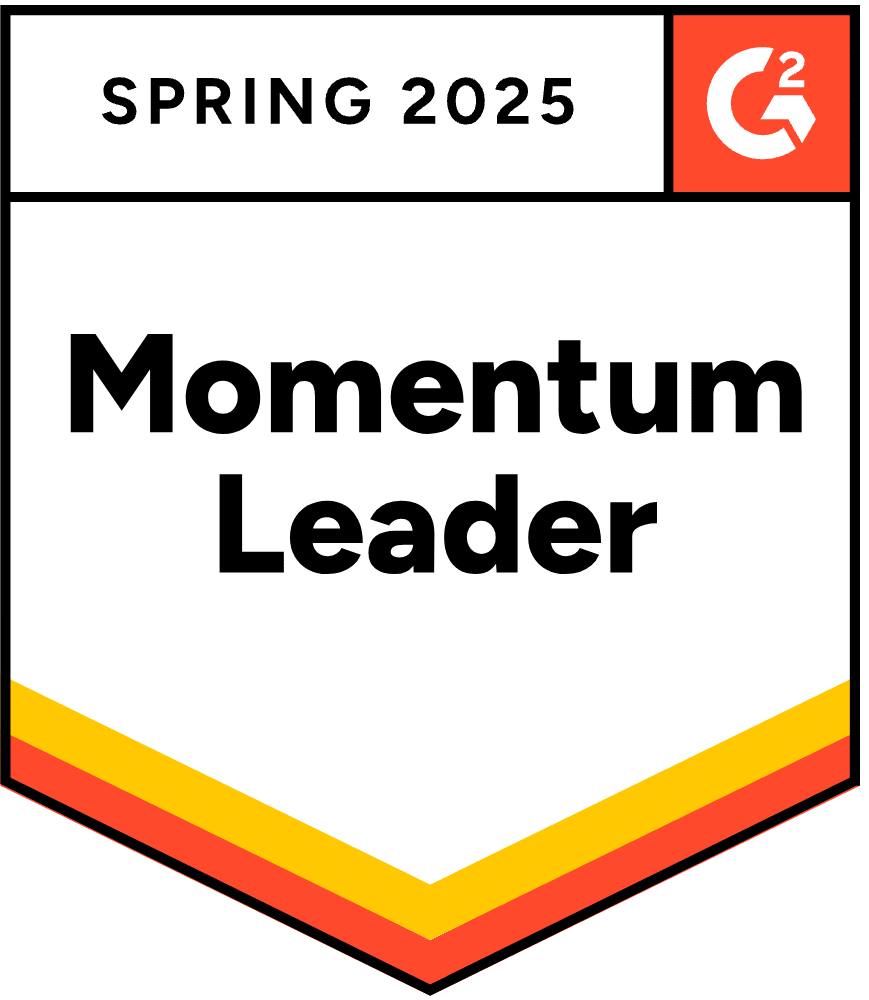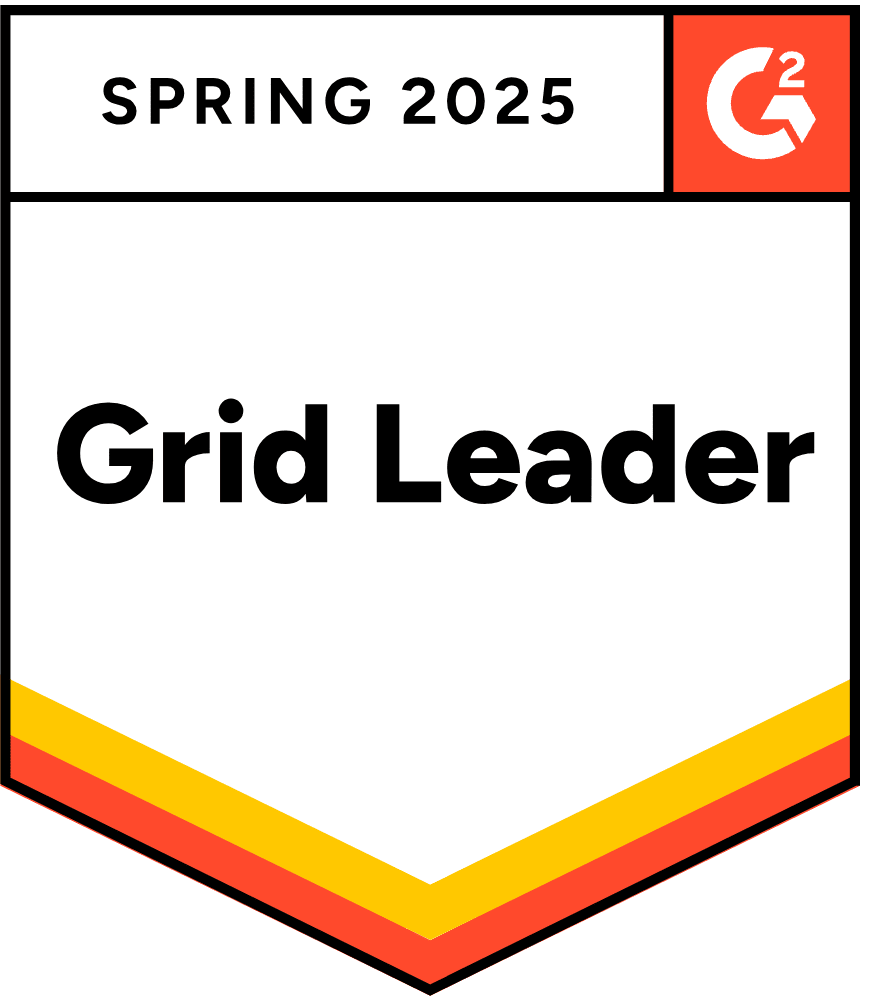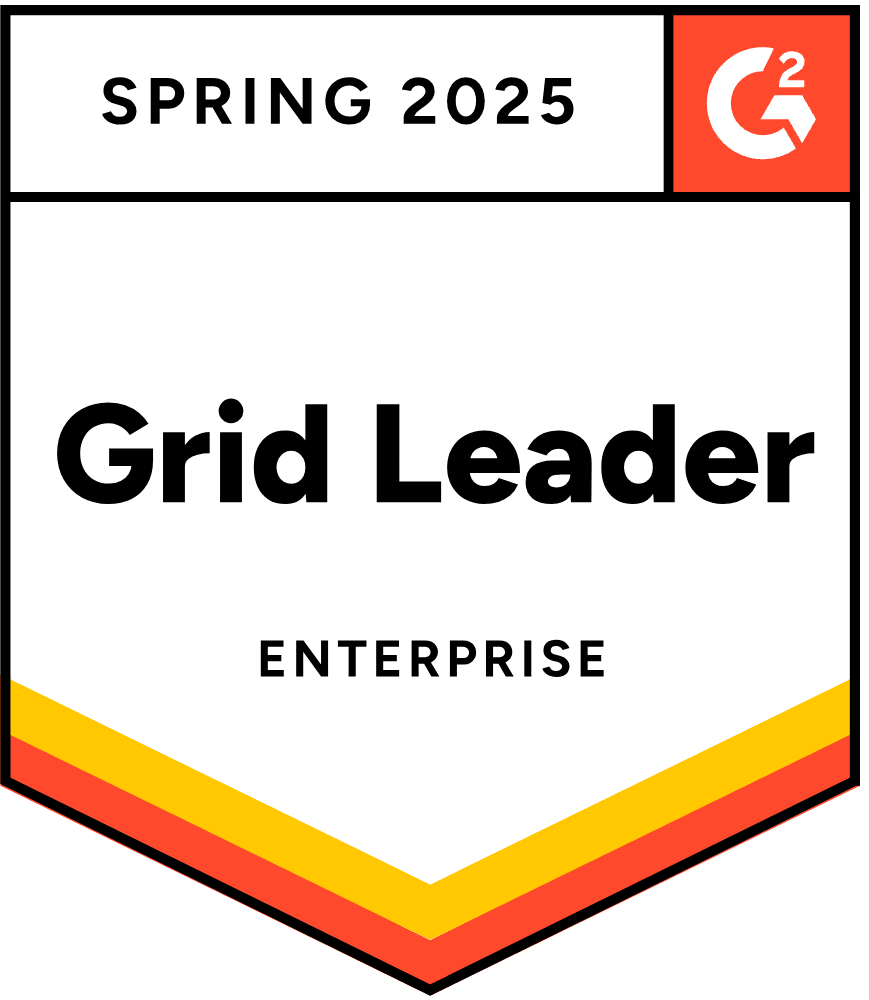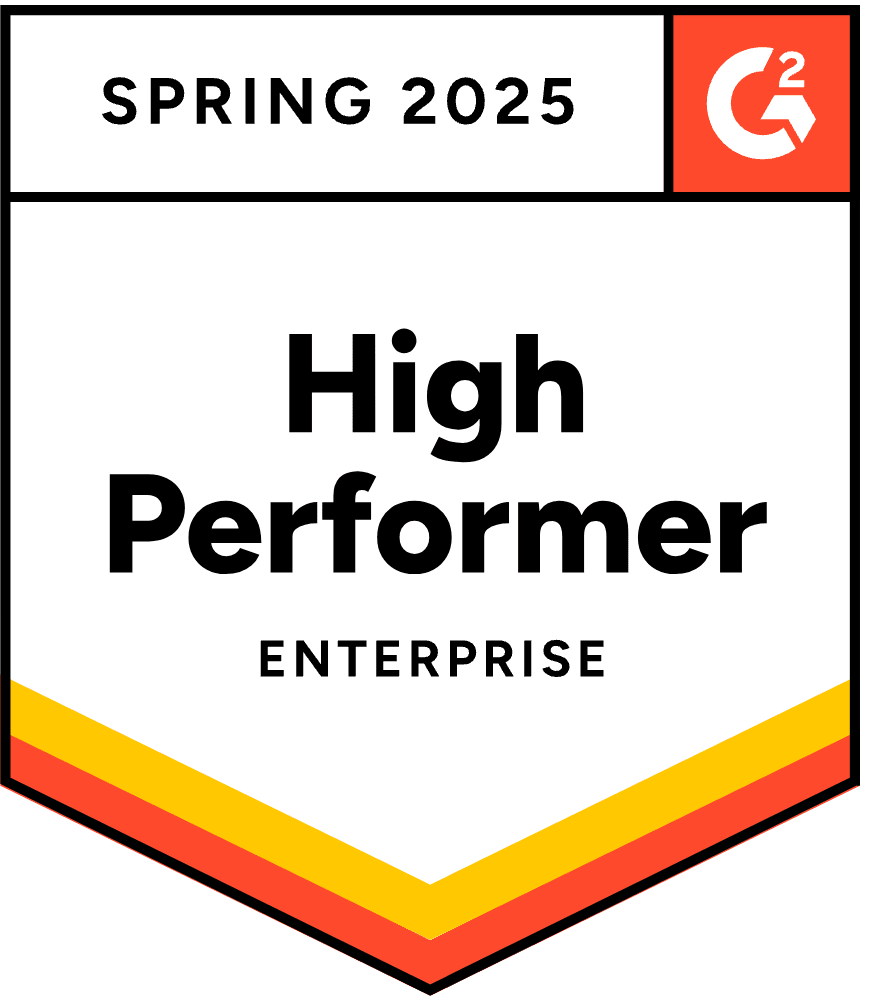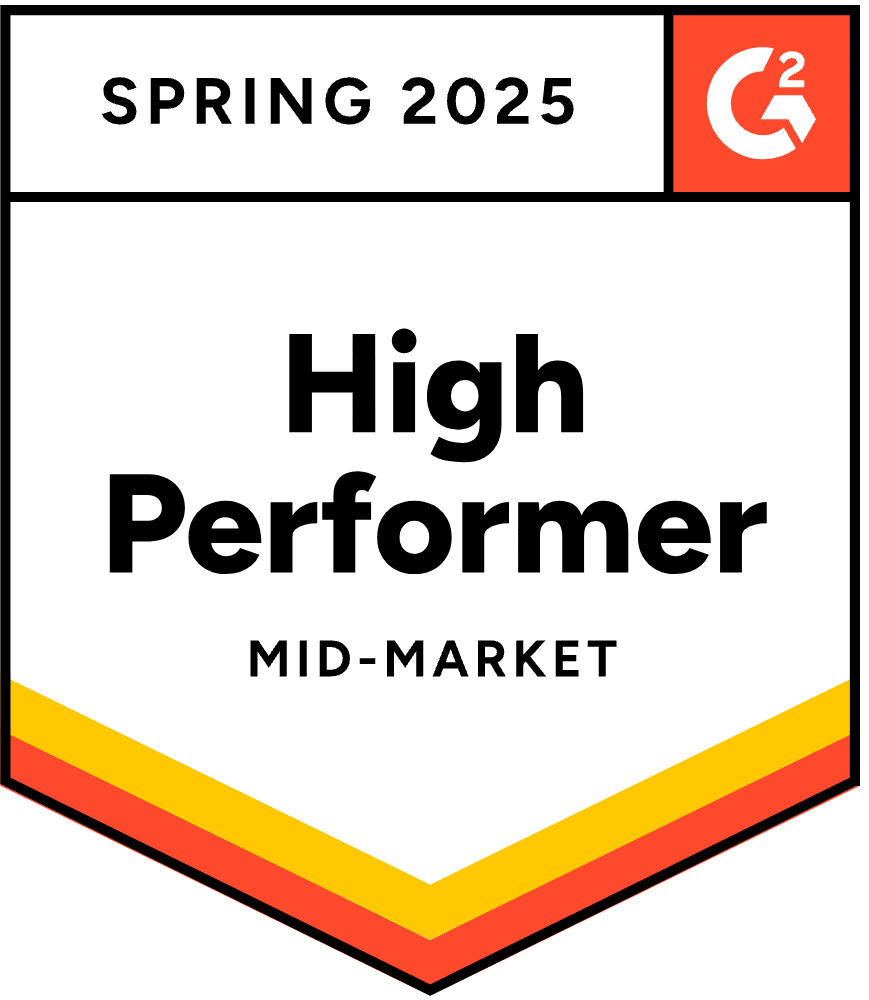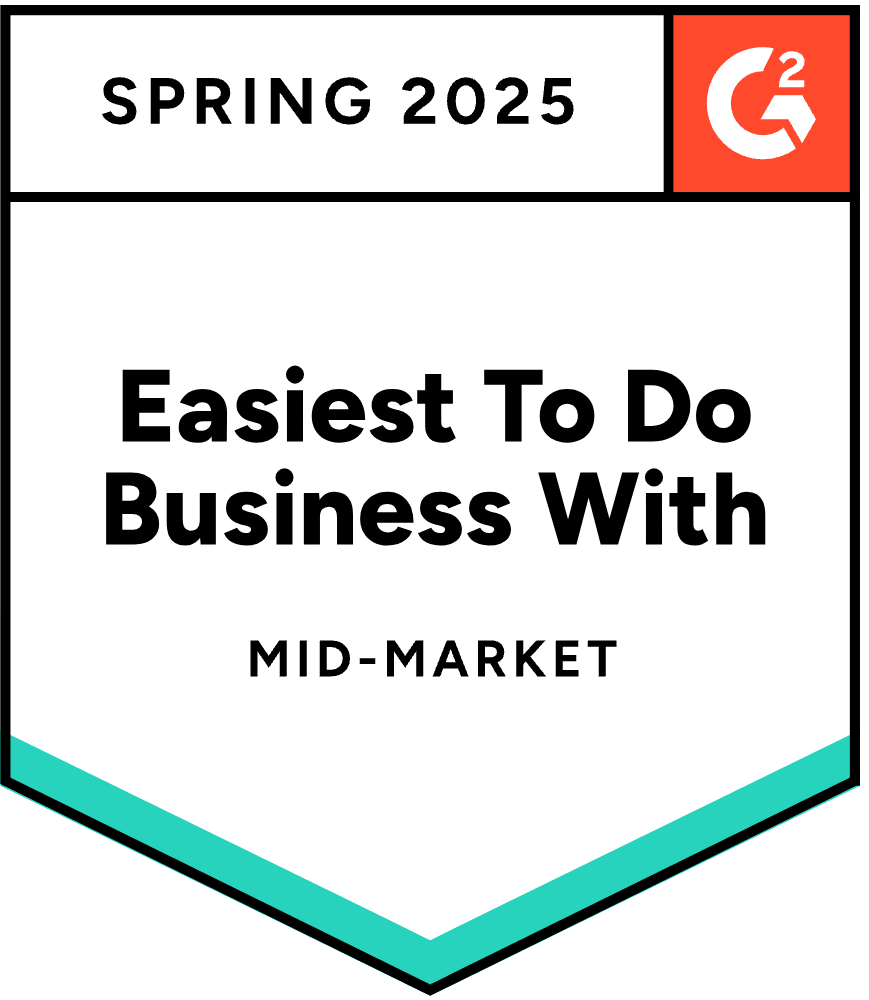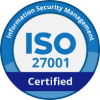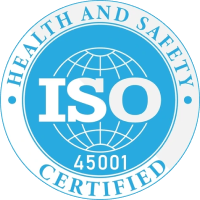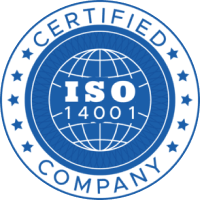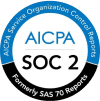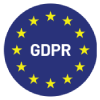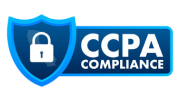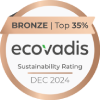Introduction
Know your AI level – Start the assessment!
Introduction
Recruiting isn’t just a process – it’s an evolution, and AI is a large part of most conversations today.
Think of AI in talent acquisition like a ladder, with every step representing a new level of maturity and impact. At the base, it’s all about automating those repetitive tasks that eat into your time. Move higher, and you’re leveraging AI for smarter decisions – optimizing job ads, hyper-personalizing candidate messages, and more. At the top? A fully integrated AI ecosystem that transforms your recruiting into a competitive edge.
We’ll take you through the stages of AI maturity in talent acquisition, exploring how each level drives better hiring outcomes, enhances talent funnel velocity, reduces costs, and improves candidate experience.
Wherever you are on your AI journey, you’ll find actionable insights to help you climb higher and redefine what recruiting success looks like.
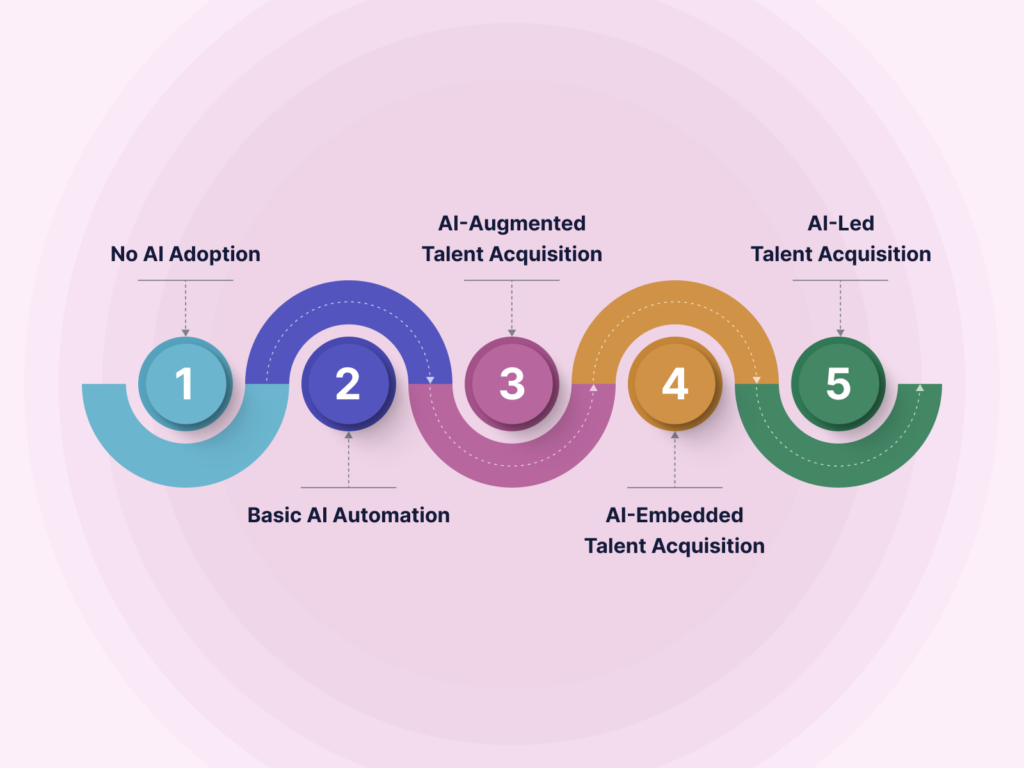
So how mature is your talent acquisition in terms of AI adoption and use?
Levels of AI Maturity in Talent Acquisition
Level 1 - No AI Adoption
Learn your AI maturity score now!
You're at the beginning, and the path ahead looks long. Yet, a journey of a thousand miles begins with a single step.
What this level means
At this stage, AI plays no role in your talent acquisition (TA) strategy, and your team lacks the necessary training to utilize it.
You are operating entirely on manual processes with no AI or automation in place. Job advertising is entirely manual, with recruiters posting on job boards without automation or optimization. Your static career site lacks a chatbot or interactive engagement features. Talent engagement relies on manual personalization of messages, with no automated email or SMS campaigns. Candidate screening involves the manual review of every resume, and AI is not used for creating job content or employer branding material.
Data is managed manually, decision-making is intuition-based, and reporting of results is reactive rather than predictive. Labor market dynamics and competitor activities are not tracked systematically, and siloed internal systems hinder the extraction of valuable insights. Finally, talent acquisition performance is not measured on an ongoing basis, and there are no governance structures in place for potential AI adoption.
Without AI-powered automation, recruiting teams rely on email, spreadsheets, and basic tools, creating inefficiencies that slow down execution and limit scalability. As a result, they face operational bottlenecks, longer hiring cycles, and higher talent acquisition costs.
It’s extremely difficult for them to compete with teams that use AI automation.
What it means to be at this level in 2025
AI utilization in hiring nearly doubled from 2023 to 2024, jumping from 26% to 53%, according to HR.com. Companies that remain fully manual risk falling behind. That means TA campaigns and processes remain slow, fragmented, and costly.
Staying in level 1 not only affects your time-to-hire and candidate experience – it puts your employer brand and talent pipeline at a competitive disadvantage. While your peers use AI to personalize outreach, automate workflows, and predict hiring trends, you might struggle to keep pace.
How to start moving toward level 2
To progress from manual TA execution to basic AI automation, leaders should focus on three foundational steps:
- Start small with automation: Identify low-risk, high-reward AI applications, such as automating your career site chatbot with conversational AI, talent CRM data entry, or email sequencing.
- Improve data readiness: Start centralizing your talent acquisition data to ensure clean, structured inputs for AI-led insights later.
- Increase AI awareness across teams: Provide AI training and conduct hands-on workshops to help teams understand how AI enhances efficiency in TA without replacing human expertise.
With these small steps, you can eliminate the most time-consuming manual tasks and begin transitioning to AI-driven automation — a critical move for staying competitive.
What level 2 looks like
- Talent acquisition strategy: AI tools are being piloted by a few team members to automate tasks, but there's no defined roadmap yet.
- Team: Your team uses ChatGPT or Gemini to the best of their ability.
- Job advertising: Your team uses a job distribution tool to push jobs automatically to job boards and social media.
- Career site chatbot: Your team has deployed a rules-based chatbot on the career site, which provides predefined responses or links.
- Talent engagement: Your team uses basic email and SMS automation tools to schedule and send emails/texts. Your talent pools receive templatized messages as a part of automated email and SMS sequences.
- Candidate screening: Your recruiters use basic keyword search to filter candidates in your CRM.
- Content and creatives: Your team uses ChatGPT or Gemini to the best of their ability.
- Labor market and competitive intelligence: Labor market data is occasionally referenced, but not embedded in process. Your team conducts ad hoc competitor research at times or relies on your vendors for the same.
- Integration: Internal systems (ATS, CRM, etc.) are partially integrated, with limited data sharing.
- Measurement: Your team tracks metrics like time-to-fill on an ongoing basis.
- Governance: This is under discussion.
Level 2 -Basic AI Automation
Learn your AI maturity score now!
You're moving in the right direction. However, there’s still a lot of ground to cover.
What this level means
At Level 2, your team has started experimenting with AI, but adoption is fragmented and inconsistent. A few of your team members are running a pilot of AI tools to automate tasks, though a clear roadmap is lacking.
Most of your team uses general AI tools like ChatGPT or Gemini as best they can. Job advertising involves a distribution tool for automated posting, while targeting and budgeting rely on recruiter intuition. Your career site features a basic, rules-based chatbot with the ability to answer frequently asked questions (FAQs), while talent engagement involves templatized messages sent through basic email and SMS automation. Candidate screening employs simple keyword searches in your CRM, and content creation also relies on the team's use of general AI tools.
Labor market data is occasionally referenced without being integrated into processes, and competitor research is ad hoc. Internal systems have partial integration with limited data sharing, and performance tracking focuses on lagging metrics in spreadsheets. Finally, AI governance is under discussion, but concrete policies and accountability measures are yet to be established. Without clear governance or data centralization, AI adoption is typically driven by individual champions rather than leadership mandates. This often limits AI’s impact and makes it difficult to scale beyond pilot projects.
What it means to be at this level in 2025
The AI adoption curve is steep, and organizations stuck in pilot mode still risk falling behind.
While Level 2 organizations have taken a meaningful and essential step toward AI-led TA execution, they risk stagnation if AI remains an experimental initiative rather than an integrated strategy. In other words, Level 2 organizations are at a crossroads: those who fail to move beyond pilot projects will struggle to keep pace, while those who scale AI strategically will unlock faster TA execution, increased efficiency, and stronger competitive positioning.
How to start moving toward level 3
To break out of pilot mode and transition into AI-augmented TA workflows, leaders should focus on four key priorities:
- Break down data silos: AI thrives on high-quality, connected data. Invest in centralizing AI-relevant data across talent acquisition systems (ATS, CRM, etc.) to enable real-time insights and automation.
- Define AI governance and strategy: AI needs ownership and direction to scale effectively. Start working on clear governance frameworks, align AI investments with business objectives, and develop a roadmap for systematic AI adoption.
- Expand AI from experiments to operations: Move beyond basic AI automation and start implementing AI-driven workflows, such as AI-powered job ad creation and distribution. Invest in specialized AI tools to automate manual, repetitive tasks.
- Upskill teams for AI readiness: AI adoption must be organization-wide, not just limited to a few AI enthusiasts. Invest in training programs and workshops to improve AI literacy; hands-on exposure to AI-powered TA workflows; and cross-team collaboration to ensure AI adoption is scalable and sustainable.
By expanding AI use cases, integrating AI into core workflows, and ensuring teams are AI-ready, organizations can move from ad hoc AI pilots to systematic AI adoption.
What level 3 looks like
- Talent acquisition strategy: AI features in plans across your team/organization.
- Team: Your team has access to specialized AI tools and uses them to automate specific tasks.
- Job advertising: AI helps optimize some aspects like bidding, in addition to automating job distribution.
- Career site chatbot: You have an AI-powered chatbot on your career site to answer questions.
- Talent engagement: Your recruiters use talent engagement tools for limited personalization. AI tools assist with content generation, segmentation, and campaign delivery (including send-time optimization), but human oversight is still central.
- Candidate screening: Your team uses structured assessments with a bit of AI.
- Content and creatives: Your team uses specialized AI tools to create job content as well as employer branding assets.
- Labor market and competitive intelligence: Labor market data is used at a high level during workforce planning. Your team uses labor market intelligence tools or industry reports with competitor intelligence at a regular frequency.
- Integration: Your systems are largely integrated with a significant amount of data sharing.
- Measurement: Your team uses your solution providers' analytics dashboards to measure effectiveness, but key metrics exist in different places.
- Governance: Some governance measures are in place, such as bias reviews or inclusion in your privacy policies. You’ve likely started an AI governance council.
Level 3 - AI-Augmented Talent Acquisition
Learn your AI maturity score now!
Nice work. You’ve reached the half way point. Stay agile and keep pushing forward!
What this level means
At Level 3, AI is no longer just an experiment — it’s an active driver of talent acquisition efficiency. You have moved beyond basic automation, using AI for campaign execution, content creation, candidate selection, and predictive analytics.
At this stage, AI features in your team’s talent acquisition plans. Your team has access to and utilizes specialized AI tools to automate specific tasks. Job advertising benefits from AI-driven bidding optimization, though human input remains crucial for most decisions. Your career site features an AI-powered chatbot for inquiries, but might lack screening and interview scheduling capabilities. Talent engagement involves limited personalization and segmentation via specialized tools, with AI aiding in content generation and campaign delivery under human supervision. Candidate screening incorporates structured assessments with some AI assistance. Specialized AI tools are used for creating job content and employer branding assets.
Labor market data informs high-level workforce planning, and competitor intelligence is gathered regularly through dedicated tools and reports. Your systems are largely integrated with significant data sharing, and while effectiveness is measured through solution provider dashboards, metrics still remain scattered and AI-powered insights are often missing. Finally, some AI governance measures, like bias reviews, are in place but inconsistently applied, with a newly formed AI governance council aiming for better oversight.
At Level 3, while AI is embedded in select workflows, and recruiting team members benefit from optimized job ads, personalized talent sourcing campaigns, and AI-recommended candidates, cross-team collaboration and governance are still evolving.
What it means to be at this level in 2025
Being at Stage 3 means you’re ahead of many — but at risk of plateauing if you don’t push for scalability, integration, and consistency. You may be experiencing friction from fragmented systems, uneven AI usage across teams, or lack of governance, but they’re all solvable problems.
The options at this stage are clear: those who scale AI effectively and fast will outpace their competitors, while those who stagnate risk losing ground to AI-enabled ones.
How to start moving toward level 4
Ask yourself these key questions: Are AI tools consistently embedded across most talent acquisition tasks? Is AI enhancing some workflows, but not yet central to decision-making? Are teams actively engaging with AI-led insights, or is there still resistance to AI-powered execution?
If AI is still operating in silos or underused, now is the time to focus on scaling AI adoption and moving toward full integration.
1. Expand AI integration across TA functions: Shift from AI-supported to AI-led workflows by embedding AI across talent acquisition.
2. Leverage AI for real-time optimization: Go beyond static automation — implement dynamic optimization levers like AI-powered A/B testing of job content or messaging, and dynamic content personalization for more relevant and engaging candidate experiences.
3. Foster cross-functional AI collaboration: Ensure TA teams and hiring managers are aligned around AI insights, enabling seamless execution and data-driven decision-making.
4. Build an AI-first culture: AI adoption must be embraced at every level. Invest in advanced AI training to deepen AI expertise across teams; AI-led performance tracking to measure and refine AI impact; and clear AI governance to standardize processes and ensure accountability.
By embedding AI into every stage of the TA motion, organizations unlock better hiring outcomes, improve operational efficiency, and create hyper-personalized candidate experiences.
What level 4 looks like
- Talent acquisition strategy: AI is a strategic priority with defined goals and milestones.
- Team: Your team uses AI regularly to both automate their workflows and collaborate cross-functionally.
- Job advertising: AI automates and dynamically manages job distribution, targeting, bid optimization, and budget allocation based on real-time source performance.
- Career site chatbot: You have a conversational AI agent embedded in your career site, offering personalized job suggestions to candidates.
- Talent engagement: AI dynamically personalizes your campaigns based on candidate skills, persona, and behavior. Email and SMS campaigns are driven by AI workflows, with content personalization based on candidate behavior and stage.
- Candidate screening: Your team uses AI-powered candidate scoring based on relevance, skills, and experience.
- Content and creatives: Your team uses AI to automate content creation workflows and generate multimodal content (text, images, video, audio) for jobs and employer branding.
- Labor market and competitive intelligence: Your team regularly analyzes labor market data and its implications with the help of AI-powered dashboards. AI aggregates competitive hiring activity and provides insights.
- Integration: Your systems are mostly integrated with complete data sharing and some AI-powered insights.
- Measurement: You have a unified analytics platform across all your TA systems, with AI-powered insights.
- Governance: You have clear governance frameworks with defined roles, AI usage guidelines, and regular monitoring for compliance and fairness.
Level 4 - AI-Embedded Talent Acquisition
Learn your AI maturity score now!
Fantastic progress. You are well ahead of the majority of your peers. Keep going!
What this level means
At Level 4, AI is central to how talent acquisition functions. TA teams don’t just use AI for isolated tasks — they rely on AI to optimize every touchpoint of the candidate journey. Recruitment marketing strategies, talent outreach, and recruiting workflows adjust dynamically based on AI-powered insights, creating a seamless, data-driven TA motion.
At this stage, your AI strategy across TA is complete with defined goals and milestones. Your team regularly utilizes AI to automate workflows and enhance cross-functional collaboration. Job advertising is fully automated and dynamically managed by AI, optimizing job distribution, targeting, bidding, and budget allocation based on real-time performance by source. Your career site features a conversational AI agent that provides personalized job recommendations. Talent engagement leverages AI to dynamically personalize campaigns with content tailored to individual candidate profiles and behaviors, driving automated email and SMS workflows. AI-powered scoring is used for candidate screening based on relevance, skills, and experience. Furthermore, AI automates content creation workflows and generates multimodal employer branding assets.
You regularly analyze labor market data and track competitor activity with AI-powered dashboards. Your systems are mostly integrated with comprehensive data sharing across teams, and some AI-driven insights. Finally, you have established clear governance frameworks with defined roles, usage guidelines, and regular monitoring for compliance and fairness.
However, while AI is operationalized (supports, guides, and takes actions), most decisions are made by humans. The opportunity now is to move from collaboration to autonomy — and shift from AI-embedded TA workflows to AI-led TA execution.
Is your organization ready for level 5?
To determine whether your organization is positioned to reach AI-led TA excellence, ask yourself: Is AI fully integrated across all TA functions, allowing them to share insights seamlessly? Are real-time AI-led interactions actively influencing job advertising, talent engagement, content creation, and TA strategy? Is there a structured approach to refining and expanding AI models based on real-world performance data?
If AI is still operating in silos, limited to specific teams, or lacking governance, now is the time to focus on scaling AI across all TA functions for full alignment.
How to start moving toward level 5
1. Strengthen AI integration: Ensure AI-led automation, data, and insights fuel all stages of your (connected) TA workflows, eliminating data silos and inconsistencies.
2. Develop continuous AI model refinement: Establish feedback and learning loops to improve AI-led decision-making over time. This will enhance candidate segmentation and personalization; optimize AI-led job advertising and talent engagement; and ultimately, improve hiring funnel conversions.
3. Delegate decision making: Pass on low to medium risk decisions to AI.
To reach Level 5, organizations must transition from AI-embedded TA workflows to AI-led TA motions, unlocking unparalleled hiring outcomes, recruiting efficiency, and candidate experience
What level 5 looks like
- Talent acquisition strategy: AI is fully integrated into your long-term vision and strategy, and fuels continuous innovation in all things talent acquisition.
- Team: AI is embedded in most day-to-day as well as strategic workflows. It delivers cross-functional insights, recommendations, and optimization.
- Job advertising: AI agents autonomously handle end-to-end job advertising: job distribution, job content optimization, media planning, targeting, bid optimization, and budget allocation; with minimal human oversight.
- Career site chatbot: You have a conversational AI agent that performs end-to-end recruiting tasks, including recommending jobs, scheduling interviews, and post-apply workflows.
- Talent engagement: AI dynamically curates the entire journey for each candidate and fully automates hyper-personalized engagement at scale. AI agents autonomously manage campaigns, adapting content, follow-ups, and responses in real-time based on engagement signals, in addition to candidate behavior and stage.
- Candidate screening: Your team uses AI-driven scoring with full contextual analysis and bias mitigation, in addition to relevance, skills, and experience.
- Content and creatives: AI not only creates job content and employer brand assets at scale, but also delivers insights, recommendations, and optimization.
- Labor market and competitive intelligence: AI actively guides your hiring strategies based on labor market trends. AI actively monitors our competition and proactively provides insights and recommendations.
- Integration: Your systems are fully integrated with deep AI-powered insights and recommendations, delivered via a conversational interface.
- Measurement: AI continuously monitors, predicts, provides insights, and recommends improvements across the TA value chain. Insights and recommendations are delivered via a conversational interface.
- Governance: You have clear governance frameworks with defined roles, AI usage guidelines, regular monitoring for compliance and fairness (including real-time bias detection), ethical reviews, cross-functional oversight, and third-party audits.
Level 5 - AI-Led Talent Acquisition
Learn your AI maturity score now!
Congratulations! You’re an AI trailblazer. Keep innovating and inspiring those around you.
What this level means
At Level 5, AI is the foundation of your TA strategy, and a competitive differentiator. Companies at this level are constantly innovating, using AI to discover new opportunities, anticipate candidate needs, and optimize TA execution faster than human-driven teams ever could.
At this stage, AI is deeply ingrained in your long-term talent acquisition vision and strategy. Your team extensively uses AI in daily and strategic workflows, leveraging its insights, recommendations, and optimization capabilities. AI agents autonomously manage the entire job advertising process, from job distribution to budget allocation, with minimal human intervention. Your career site features a sophisticated AI agent that handles end-to-end candidate interactions, including job recommendations, interview scheduling, and post-application processes. Talent engagement is fully automated and hyper-personalized at scale, with AI dynamically curating the candidate journey and autonomously managing campaigns with real-time adaptation. AI-driven candidate scoring incorporates comprehensive contextual analysis and bias mitigation. AI not only generates job content and employer branding assets at scale but also provides insightful recommendations and optimizations.
Your hiring strategies are actively guided by AI-analyzed labor market trends, and competitive intelligence is proactively delivered with AI-driven insights. All systems are fully integrated. AI continuously monitors, predicts, and recommends improvements across the entire talent acquisition value chain through a conversational interface. Robust governance frameworks are in place, featuring defined roles, usage guidelines, continuous monitoring for compliance and fairness (including real-time bias detection), ethical reviews, cross-functional oversight, and third-party audits.
Here, AI-powered TA execution is the standard. In other words, AI not only informs strategy — it executes it. Feedback loops improve model decision making and performance automatically.
What it means to be at this level in 2025
As a Level 5 TA organization, you are a rare breed, and a true AI pioneer. For you, the purpose of AI has shifted from operational efficiency to AI-powered innovation: driving self-optimizing systems, dynamic talent engagement models, and innovative ways to hire talent and cut costs.
Maintaining your position requires continuous refinement, investment, and strategic AI expansion.
Key priorities for AI-first TA leaders
1. Leverage AI for market expansion: Use AI to identify untapped markets, new cost efficiency opportunities, and emerging candidate needs before your competitors do. Deploy AI for real-time forecasting to align TA efforts with shifting labor market trends.
2. Develop self-optimizing AI models: Invest in AI models that refine themselves over time, improving engagement and conversion tactics dynamically. Personalize TA motions in real-time. Automate AI model retraining to ensure insights stay relevant as markets shift.
3. Drive competitive differentiation with AI innovation: Experiment with new AI-powered ways to interact with candidates. Use AI to create new cost efficiencies by leveraging its predictive and personalization capabilities. Develop AI-led competitive intelligence to stay ahead.
Conclusion
The journey to AI maturity in recruitment is a transformative one, with each stage offering new opportunities to optimize, innovate, and lead. Whether you’re just starting with basic automation or aiming to build a fully integrated AI-driven recruiting process, every step forward creates measurable impact – faster hiring, better candidate matches, and lower costs.
As you assess where you are today, remember that AI isn’t just a tool; it’s a long-term investment in the future of your talent strategy. The higher you climb, the greater the rewards. So, take the next step, embrace the possibilities, and watch your recruiting evolve into a true competitive advantage.
FAQs
- How does AI improve the recruitment process?
AI enhances efficiency by automating repetitive tasks like resume screening, scheduling interviews, and sending follow-ups. It also uses data to identify top candidates, predict hiring outcomes, and ensure a faster time-to-hire, saving you time and money. - Is AI recruitment suitable for all company sizes?
Absolutely. From startups to enterprises, AI recruitment tools can be customized to meet diverse needs. Small businesses benefit from streamlined processes, while larger organizations gain scalability and insights across high-volume hiring. - Will AI replace recruiters?
Not at all. AI complements recruiters by handling administrative tasks and providing data-driven insights. This allows recruiters to focus on building relationships, assessing cultural fit, and crafting personalized candidate experiences. - How can AI reduce hiring biases?
AI algorithms are designed to analyze data objectively, removing unconscious human biases from the hiring process. However, it’s crucial to monitor AI models to ensure they are trained on diverse and unbiased datasets. - Is AI implementation expensive?
While there’s an initial investment, AI tools typically result in long-term cost savings by reducing time-to-hire, lowering recruitment spend, and improving hiring outcomes. Many solutions are scalable, making them accessible for different budgets. - How do I get started with AI recruitment?
Start by identifying your biggest recruitment pain points. Research AI solutions that align with your goals, set a budget, and involve your team for smoother adoption.
